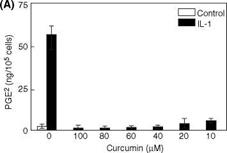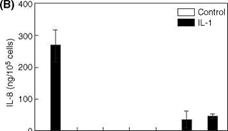The demand for effective non-prescription topical products to treat inflammatory diseases such as eczema, atopic dermatitis, seborrheic dermatitis, and even psoriasis has led to the
introduction of products based on either novel synthetic chemicals or on botanical “actives” which claim to be effective anti-inflammatory compounds. Some of the many purported botanical anti-inflammatory “active” ingredients in cosmeceutical products include bee pollen, curry extract, calendula extract, chamomile, jewelweed, green tea extract, geranium essential oil, aloe, bilberry, tea tree oil, lavender essential oil, boswellia, and willow bark, to mention only a few. Given the abundance of botanicals which claim anti-inflammatory activity, is there any scientific evidence to suggest that any actually have inhibitory effects on the production or action of inflammatory mediators in the skin? The answer is yes for a few botanically derived ingredients. Clearly the botanically derived substance most widely studied for its anti-inflammatory activity is curcumin, the active ingredient in turmeric, the root used in curry dishes. A large number of scientific studies published in peer-reviewed scientific journals over the past 5-10 years have shown remarkable and potent anti-inflammatory activities of curcumin (62). In fact, given curcumin’s broad inhibitory effects on the production of inflammatory mediators by a wide number of cell types including immune cells, the compound could be classified as an immune suppressor or at the very least an immune modulator. Curcumin is effective in blocking both AP-1 and NF-kappa B driven inflammatory genes including COX-2, IL-8, IL-1, IL-12, and TNF-alpha (63). An example of the potency of curcumin in blocking IL-1 induced inflammatory gene expression in human fibroblasts is shown in Figure 5. Note that curcumin at concentrations below 10 pM can suppress the IL-1 induced increase in PGE-2 and IL-8. The compound is also very effective in blocking TNF-alpha production in normal human fibroblasts.
Although the mechanism of action of curcumin in suppressing the expression of inflammatory genes is not completely understood, it appears that at least one mechanism involves a block of the intracellular signaling pathway that leads to AP-1 and NF-kappa B activation (64). Recent evidence suggests that this blockade occurs near the start of the signaling pathway, that is, at the activated receptor, e. g., the IL-1 activated receptor (65).
Another plant derived “active” that has been shown through rigorous scientific studies to have anti-inflammatory activity is quercetin, a flavonoid derived from several plants and fruits, including apples. Its efficacy as an antioxidant and anti-inflammatory seems to provide some substantiation for the old expression, “an apple a day keeps the doctor away.” Recent studies have shown that quercetin, like curcumin, can block NF-kappa B driven genes and thus prevent the production of a variety of inflammatory mediators (66,67). Other plant derived compounds that have been scientifically shown to
|

have anti-inflammatory activities, at least in cell culture model systems, include resveratrol, derived from grapes, boswellic acid, derived from Boswellia, the polyphenol Epigallocatechin gallate, derived from green tea, and bisabolol, derived from Chamomile. All of these compounds have been shown to exert some anti-inflammatory effect on cells in culture, either inhibiting the production of PGE-2, cytokines, chemokines, adhesion molecules, or other molecules involved in the inflammatory process.

